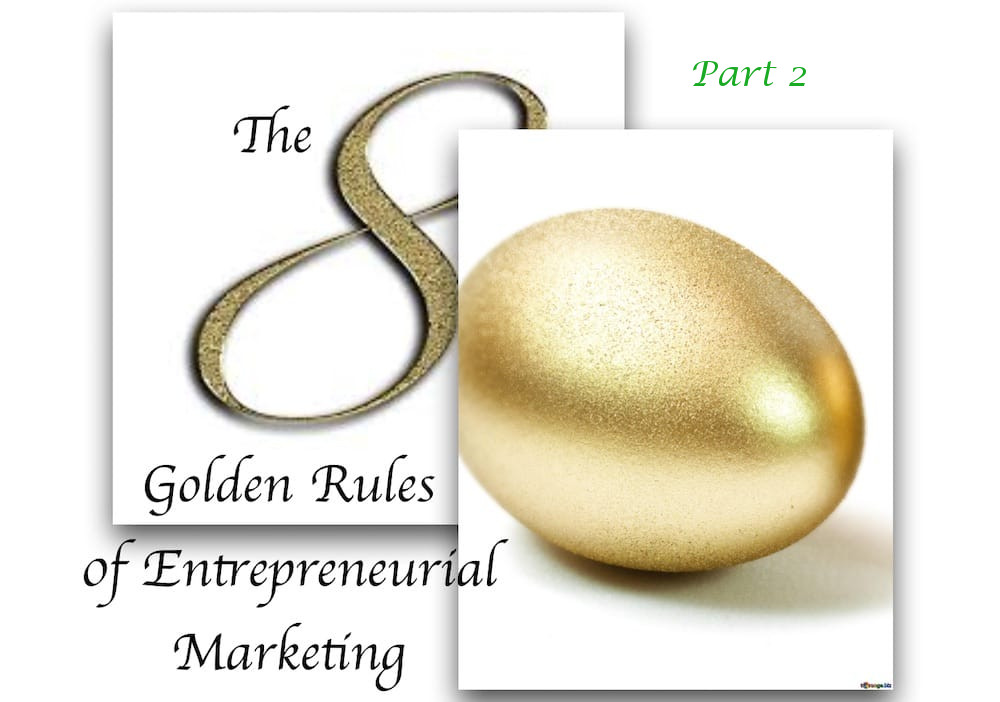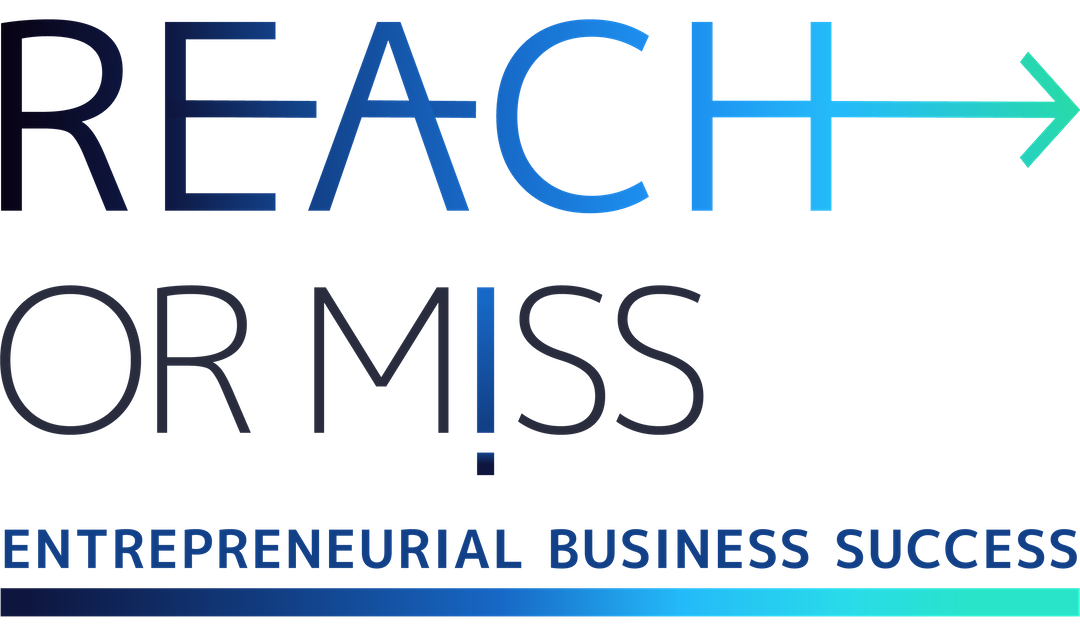The Eight Golden Rules of Entrepreneurial Marketing* Part 2

The Eight Golden Rules of
Entrepreneurial Marketing*
Part 2

This is the second part of the The Eight Golden Rules of Entrepreneurial
Part 2 – The Next Four Golden Rules
In the previous part, we defined the four most basic rules at the heart of customer focused market strategy. Any marketing success we have builds upon those basic rules.
Part 2 relates to the next four rules that respond to the question of what should we do tomorrow morning to create the breakthrough to commercial success:
Reminder: The first four Golden Rules we discussed were:
- Identify the primary and secondary customers you need to focus on at all stages of the product’s life cycle.
- Define your product from the customer’s perspective.
- Find the category the product needs to play in according to market behavior.
- Find the value that will motivate the customer to purchase the product.
If you haven’t yet read The Eight Golden Rules of Entrepreneurial Marketing – Part 1 I recommend you read it first.
In this post, we will move from the market strategy to the marketing stages – communication with the customer or what is known as marketing communications. These are the four rules that constitute the platform for achieving maximum sales and building your brand.
Golden Rule 5: Set objectives and targets
All marketing activity, whether it is a general activity, such as a launch, or a specific activity, such as preparing a video, begins by defining the objectives, followed by deriving quantifiable targets from them. These objectives can be meeting a target date, number of participants, number of clicks, etc.
Any quantifiable target is good. It is less important to be absolutely precise when setting the target. The important concept is to set targets according to our best assumptions and considerations as to what we will be able to achieve.
At the end of the activity, we check: If we met the target – great! If we exceeded it by far, we will examine whether the target we set was too low and learn from that for next time, or whether we did something outstanding – and we can learn from.
This is also the case if we completely missed the target: our target was either too high and unrealistic, and we need to correct that in the future, or there was something we did not do well enough or we made a mistake and will learn from it for the next target.
Golden Rule 6: Go on a treasure hunt (where is our potential client?)
After we have identified who the best customers are for us at the stage the company is in (see Golden Rule 1 in the first part), we need to ask how to find them.
This question relates to marketing communications, as well as to sales – where are they located and where should we “catch” them in order to have the best chance possible to close the sale (online, on the phone, in the office, at a trade show).
To understand where the customers can be found, let’s take a detailed look at the customer we want to focus on.
For example, Visualead, a company that develops and markets visual QR codes, realized while developing its market strategy that its main target audience was actually advertisers and designers.
First, the Visualead team studied them in depth so that they could understand which advertisers and designers were a good fit for them; leaders, small companies, professional, amateurs, from which countries, cities, etc.
Then, when planning the marketing activity, the team prepared a long list and checked where each of the company’s two target audiences could be found: what do they read professionally, which bloggers do they follow, what websites to they visit to find information or visuals, do they go to trade shows (physically or virtually) and, if so, which ones, in which countries/regions are they physically concentrated in each country, and more.
Golden Rule 7: Plan how to reach the potential customers
Through which media channels should we communicate with potential customers (the internet, print, trade shows, personal emails)?
What is the best way to reach customers: personally, as a member of an affiliated group or defined audience, during work hours or leisure? Through social media (if so, which ones)? Advertising? etc.
When we discuss the activities themselves, through which we will reach our target audience, the question is where should we engage in advertising, sales promotion, and other activities to convey our messages to the customer in order to achieve maximum effectiveness. What websites do our customers visit? What LinkedIn groups? Who are the opinion leaders? Whose blogs do they read? What tradeshows do they attend? Where do they spend their leisure time? Etc.
After we discover where our customers are (in the sixth stage), and we understand the full range of activities that can be used to reach them, we will know whether this is the place to convey our messages and which of these channels is the most effective.
Here, in fact, we are engaged in the first phases of planning our media-advertising campaign. By campaign, we refer to the methods used to convey messages to the customer. While the market strategy is razor sharp, marketing communications need to be fully, meaning 360 degrees, customer focused. We’ll discuss this in a specific post.
Golden Rule 8: Choose the right message and convey it to the customer
And now, we have reached the heart and soul of our plan for communications with customers or the marketing communications plan: What are the marketing messages that will motivate the customer, and where and how should they be conveyed.
This phase is done through professionals. They can be professional company employees or external suppliers: social media specialists, webmasters, internet advertising experts, designers, or PR people, just to name a few.
And, before we close, let me make a recommendation based on my experience from the many activities and campaigns I ran as VP Marketing and CEO, and my experience working with start-ups over the past ten years: I believe that aside from very specific issues, it is generally better to work with talented external suppliers that are the best fit for us (even in terms of personal chemistry, cost, etc.) than to work with our own internal people.
We want to work with professional suppliers who have already failed twice and succeeded ten times (ask for recommendations!) instead of engaging in trial and error at our own expense.
In short, after we have followed and implemented the Golden Rules, we “just” need to sell and bring in the real gold. If we follow these rules to the letter, it will work, because this “magic,” which is known as marketing, has very specific rules and, when you follow them correctly, it works.
Listen to my REACH OR MISS podcast where I interview Deepak Shukla in – Deepak Shukla best advice to any entrepreneur: “you need to be unreasonable in your pursuit of success and unreasonable in the level of quality that you bring to the table.”
To the 1st part of Golden Rules
